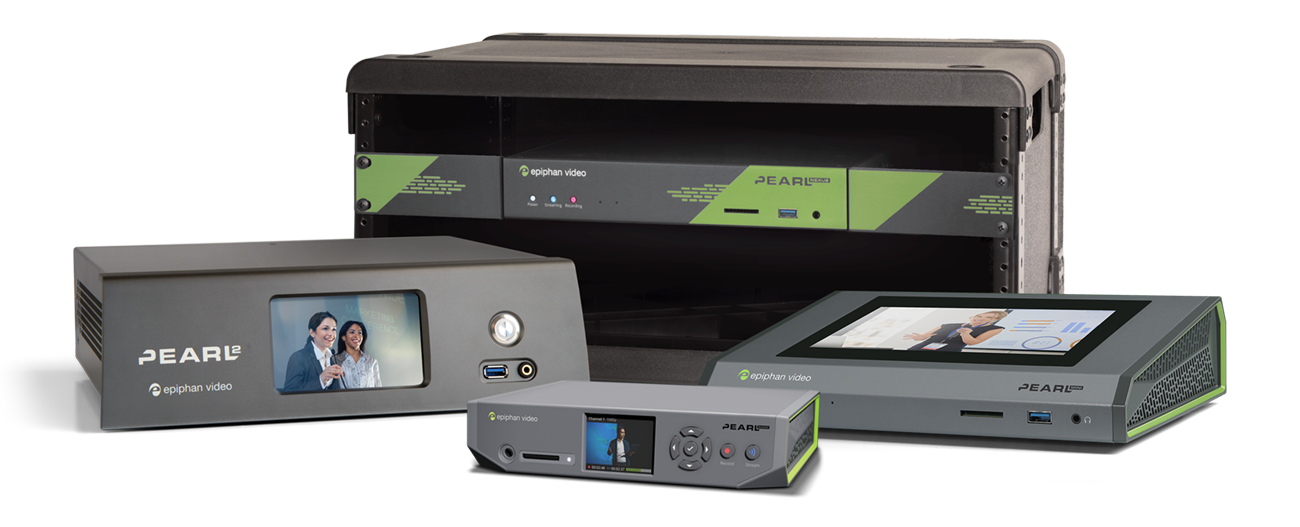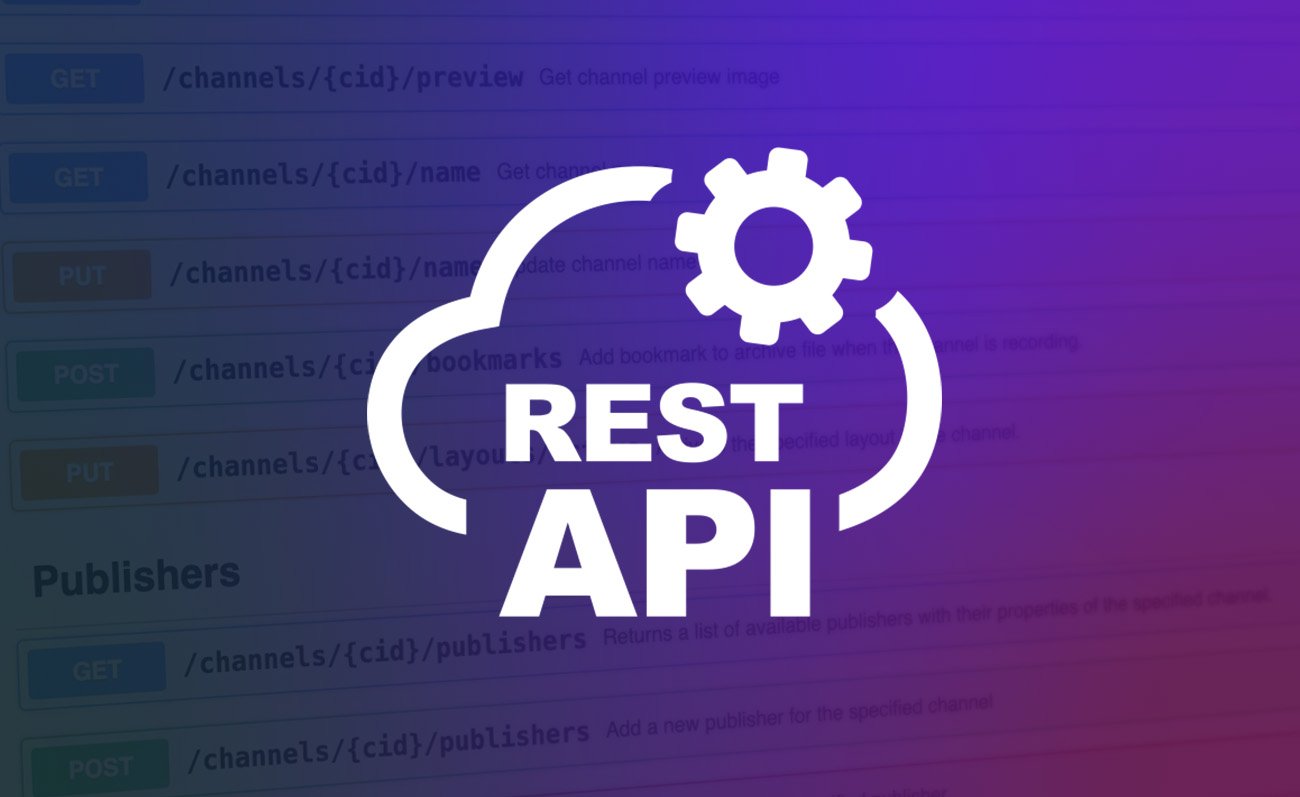From streaming platforms to content management systems, today’s video workflows rely on systems that talk to each other. REST API integration makes this possible. It’s the bridge that allows applications to exchange information, automate tasks, and work together seamlessly.
If you’ve ever scheduled a live stream to start automatically or synced video metadata with a third-party system, chances are a REST API was behind it.
But what exactly is REST API integration? How does it work? And how can it streamline your AV workflows?
Let’s break it down.
Understanding the basics of REST API integration
REST stands for Representational State Transfer, a set of design principles that define how web services should communicate. A RESTful web service uses standard HTTP methods like GET, POST, PUT, PATCH, and DELETE to handle requests and responses between applications.
At its core, a REST API (short for application programming interface) exposes endpoints – specific URLs that represent objects or actions. By sending an HTTP request to an API endpoint, a client can retrieve data, send updates, or trigger a function.
For example, an API call might send a POST request to start a video recording or a GET request to fetch device status. Authentication ensures that only authorized users can interact with the system.
The real power lies in integration—connecting your platform or application with a third-party system via a REST API. This API integration allows different tools to share data and functionality, forming a flexible, REST-based ecosystem.

Streamline with Pearl API
Simplify video production with Pearl’s powerful API. Automate, customize, and integrate seamlessly into your AV workflows for education, enterprise, and live events.
Why REST API integration matters in AV and video production
In the world of AV and video production, REST API integration isn’t just helpful—it’s transformative.
Workflow automation
Manual processes introduce friction and leave room for error. With a REST API integration, you can automate time-sensitive tasks like:
- Starting and stopping live streams
- Beginning recordings on a schedule
- Transferring video files to cloud storage
- Updating metadata across platforms
For example, a control system or CMS can trigger a live stream to start the moment a session begins—no operator needed.
Cross-platform synchronization
Many AV environments use a mix of systems: learning platforms, CMSs, streaming destinations, and internal dashboards. REST API integration ensures these tools communicate, synchronizing content and metadata across the board.
This might look like:
- Pushing lecture capture session titles from a CMS to your encoder
- Tagging recordings with speaker names or locations
- Linking assets to a digital asset management (DAM) system post-production
Remote control and monitoring
AV teams managing dozens (or even hundreds) of devices across locations need reliable remote oversight. REST APIs allow centralized monitoring and control by exposing endpoints for real-time status checks, error reporting, and logging.
For example, you could build a custom dashboard that polls devices for health data or triggers alerts when a device goes offline. The result: faster troubleshooting and minimal downtime.
Custom interfaces and user experiences
Not every AV user wants to log into a full admin interface. REST APIs give developers the tools to build user-friendly control interfaces tailored to specific use cases—whether that’s a simple “Start Recording” button or a classroom touch panel with scheduled presets.
By leveraging API documentation, developers can shape the user experience without compromising the underlying system’s power.
Real-world example: Using REST API with Epiphan Pearl
Whether you’re overseeing a university-wide lecture capture system or managing AV production in a corporate environment, REST API integration with Epiphan’s Pearl hardware encoders (Pearl Nano, Pearl Mini, Pearl Nexus, and Pearl-2) gives you a high degree of flexibility and control.
With Pearl’s REST API, you can automate repetitive tasks, streamline operations, and ensure consistency across your video workflows. Common use cases include:
- Scheduling recordings via a CMS
- Starting and stopping streams remotely
- Retrieving device health and status information
- Pushing files to cloud storage post-capture
- Adjusting layouts or switching scenes on the fly
- Managing file naming conventions and configuration presets
These capabilities make it easier to integrate Pearl into a centralized AV control system, a scheduling solution, or a custom-built interface. The result is fewer manual steps, better oversight, and more efficient video operations.
How a video production company uses Epiphan Pearl API
See how Cinestack’s Will Hanson uses the Epiphan Pearl API to simplify and scale multi-room conference recording and live streaming.
In this live demo, Will shows off his custom-built Pearl dashboard, powered by Epiphan’s REST API. From deployment, to status, start/stop, overflow SRT and more, discover how Cinestack delivers a seamless “one-stop shop” media management service using a fleet of Pearl-2s.

Don’t reinvent the wheel: Copy-paste REST API commands
If you’re short on time or new to API integrations, Epiphan makes it even easier with a library of ready-to-use, copy-paste commands.
Published directly on our website, these prewritten API calls let you hit the ground running—no guesswork required.
Explore copy-paste REST API commands for Pearl →
Each command includes:
- Clear syntax: Just copy, paste, and edit the IP address or channel name as needed
- Curl-based examples: Run them right in a terminal or integrate into scripts
- Use-case breakdowns: From setting up layouts to triggering multi-record actions
Here are just a few examples of what you can do:
Start recording on a specific channel
curl -X POST http://192.168.1.111/api/v2.0/recorders/1/control/start
Stop all channels
curl -X POST http://192.168.1.111/api/v2.0/recorders/control/stop
Change the layout of a channel
curl -X POST http://192.168.1.111/api/v2.0/channels/1/layouts/active?id=2
These templates are ideal for developers and IT admins who want to automate device behavior without diving deep into documentation. They’re also a great teaching tool for those new to RESTful web services.
Final thoughts: REST API integration is the glue for modern AV systems
Whether you’re capturing court proceedings, streaming city council meetings, or standardizing lecture capture across campus, REST API integration gives your AV systems a smarter, more scalable foundation.
With Pearl’s developer-friendly API, your organization can:
- Automate video production tasks
- Gain insights into system performance
- Create custom interfaces
- Improve content delivery
And thanks to Epiphan’s growing library of copy-paste commands, the path to integration has never been easier.
Let your systems do the talking—so your team can focus on creating value.
Would you like a call to action pointing to Pearl or our API documentation? Or should we route readers to our contact page to start planning their integration?

